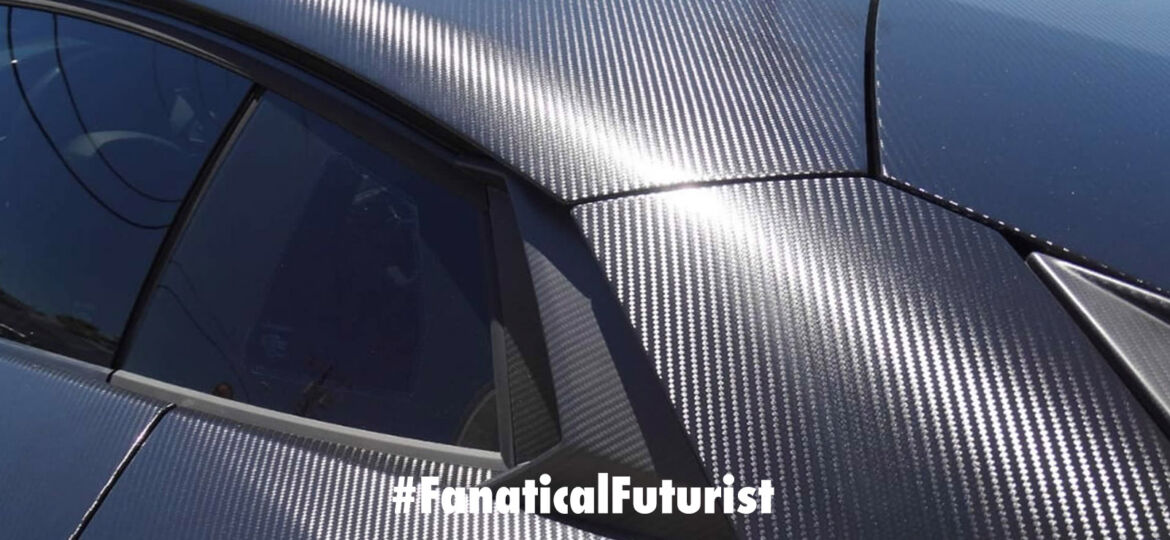
WHY THIS MATTERS IN BRIEF
As our understanding of how to turn mundane objects and materials into batteries increases in the future anything and everything could be a battery.
As I discussed a little while ago Carbon Fiber is going through its own little revolution, firstly it can now be 3D printed, and secondly it can be made from cheap plant based materials as opposed to expensive dirty fossil fuels. Both of which make it cheaper to mass produce and use. Now though researchers at the Chalmers University of Technology in Sweden have announced they’ve also managed to turn it into a battery and act as an electrode by making minor adjustments to the way it’s made. And while that might not seem like big news it could have significant ramifications for the electric car industry and beyond by helping get rid of the need to use traditional Lithium Ion batteries. It’s also a technology concept that’s firmly on Lambourghini and MIT’s radar after the pair announced the development of their Terzo Millenio concept, a batteryless hypercar unlike any other that they hope will be produced on 2030, and the superyacht industry after I spoke at one of their design events recently.
Electric vehicles without the batteries make a huge amount of sense when you think about the benefits and implications – electric cars and trucks could be made of Carbon Fiber instead of steel or aluminium which means they could be up to 50 percent lighter and much more energy efficient. Furthermore if their exterior panels could store electricity they could use fewer batteries, and one day even become batteryless like Lamborghini’s concept, especially if they’re combined with other technologies such as new photovoltaic materials, such as Hyundai’s latest concept, and smart energy generating windows, regenerative braking, roadside wireless charging, as is being experimented with by BMW and others, and more. Also aircraft, which Airbus, Boeing, Rolls Royce and Zunum Aero are electrifying and which today account for a large percentage of carbon emissions could also benefit, again, by eliminating batteries and weight from the equation – something that’s currently holding them back from realising their aspirations of creating the first generation of electric aircraft despite huge advances in recent battery tech. And that’s nothing to say about electrifying the first generation of flying taxis…!

How it works
“A car body would then be not simply a load-bearing element, but also act as a battery,” said Leif Asp, Professor of Material and Computational Mechanics at Chalmers. “It will also be possible to use the carbon fiber for other purposes such as harvesting kinetic energy, for sensors or for conductors of both energy and data. If all these functions were part of a car or aircraft body, this could reduce the weight by up to 50 percent.”
Not all carbon fiber is created equal either, says Asp. Some have large, highly oriented crystals and are twice as strong as steel. That type of carbon fiber does not conduct electricity well. However, other types of carbon fiber have poorly oriented crystals. They are about as strong as steel but have good electrochemical properties. They also have the additional benefit of being less costly to manufacture.
“We now know how multi-functional carbon fibers should be manufactured to attain a high energy storage capacity, while also ensuring sufficient stiffness,” Asp says. “A slight reduction in stiffness is not a problem for many applications such as cars.”
The researchers say they are already exploring how to use the new technology with several automobile and aircraft manufacturers. For airplanes, the carbon fiber might need to be slightly thicker than it would be for automotive use to compensate for its decreased rigidity, but making it thicker also increases its energy storage capacity so you loose some and you win some.
“The key is to optimize vehicles at system level – based on the weight, strength, stiffness and electrochemical properties. That is something of a new way of thinking for the automotive sector, which is more used to optimizing individual components. Structural batteries may perhaps not become as efficient as traditional batteries, but since they have a structural load bearing capability, very large gains can be made at system level,” Asp says. “In addition, the lower energy density of structural batteries would make them safer than standard batteries, especially as they would also not contain any volatile substances.”
If the whole idea of vehicles that are also batteries seems a little far fetched to you then it’s probably time to recall that nuclear powered submarines and sending people to the Moon were also once fanciful ideas. And just a scant ten years ago electric cars themselves were dismissed as a joke by many in the industry, yet here we are, on the verge of electrifying the entire industry, and just like Lithium Ion batteries today, tomorrow structural batteries could play an important role in decarbonizing the transportation sector and that would be a great thing for all of us, and the environment.

















Great information, keep it coming 🙂